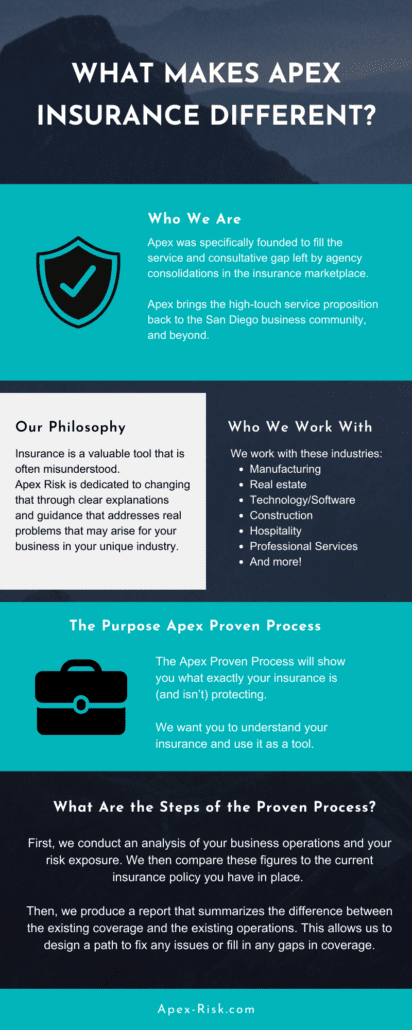A Biased View of Pacific Prime
A Biased View of Pacific Prime
Blog Article
Pacific Prime Things To Know Before You Get This
Table of ContentsPacific Prime - An OverviewThe Best Guide To Pacific PrimeEverything about Pacific PrimeSome Ideas on Pacific Prime You Should Know
In a lot of states, the insurance company is needed to send you a copy of the changes to your plan. It is very important that you read Endorsements or Motorcyclists so you recognize exactly how your plan has changed and if the plan is still adequate to satisfy your requirements. To get a duplicate of your insurance coverage, please call your insurance coverage agent or company.
The Institute of Medicine (IOM) Committee on the Repercussions of Uninsurance launches a prolonged examination of evidence that addresses the significance of medical insurance protection with the publication of this record. Insurance coverage Issues is the first in a series of 6 records that will be issued over the next 2 years documenting the reality and repercussions of having actually an approximated 40 million individuals in the United States without medical insurance protection.

An Unbiased View of Pacific Prime
The goal of this collection of studies is to refocus plan focus on a longstanding issue. Complying with the longest economic expansion in American history, in 1999, an approximated one out of every 6 Americans32 million adults under the age of 65 and greater than 10 million childrenremains uninsured (Mills, 2000).

10 percent of the population represent 70 percent of wellness care expenditures, a relationship that has continued to be continuous over the previous 3 decades (Berk and Monheit, 2001) - maternity insurance for expats. Hence medical insurance proceeds to offer the function of spreading out danger even as it increasingly funds regular care. From the perspective of healthcare providers, insurance brought by their individuals aids secure a revenue stream, and neighborhoods profit from monetarily sensible and secure healthcare specialists and establishments
Government offers medical insurance to populations whom the personal market may not offer effectively, such as disabled and elderly persons, and populaces whose access to health care is socially valued, such as youngsters and pregnant females. The best ends of health and wellness insurance policy coverage for the individual and areas, consisting of office communities of workers and employers, are boosted health results and top quality of life.
The 3-Minute Rule for Pacific Prime
Workers rate health and wellness insurance policy first without a doubt in value among all the advantages provided in the office (Salisbury, 2001). There have actually been sizable investments of personal and public funds to provide health insurance, many individuals still have no coverage. In spite of extensive reporting of survey searchings for and health and wellness treatment research results, the public stays confused and misinformed regarding Americans without health and wellness insurance and the ramifications of lacking protection.

Without inquiry, the intricacy of American healthcare financing systems and the wealth of resources of information contribute to the general public's confusion and skepticism about wellness insurance coverage data and their interpretation. This report and those that will follow objective to distill and present in conveniently reasonable terms the considerable research study that bears upon questions of wellness insurance policy coverage and its significance.
Fifty-seven percent of Americans polled in 1999 believed that those without health insurance policy are "able to get the treatment they need from doctors and medical facilities" (Blendon et al., 1999, p. 207). In 1993, when nationwide attention was concentrated on the issues of the without insurance and on pending health care legislation, just 43 percent of those surveyed held this belief (Blendon et al., 1999).

They also get fewer precautionary services and are less most likely to have normal look after chronic conditions such as hypertension and diabetes. Chronic illness can bring about expensive and disabling complications if they are not well managed (Lurie et al., 1984; Lurie et al., 1986; Ayanian et al., 2000). One nationwide study asked more than 3,400 grownups concerning 15 highly severe or morbid problems.
Pacific Prime - An Overview
Extra proof is provided later in this chapter in the discussion of insurance coverage and access to healthcare. https://padlet.com/pacificpr1me/my-harmonious-padlet-xyem37dpr2sq1yce. People without medical insurance are young and healthy and balanced and pick to go without insurance coverage. Nearly fifty percent (43 percent) of those surveyed in 2000 believed that people without health and wellness insurance coverage are wikipedia reference most likely to have health issue than individuals with insurance policy
Citizens and policy manufacturers in emphasis team conversations characterize those without insurance coverage as youngsters that have the chance to be covered and feel they do not need it (Concierge Novelli, 2001). Compared to those with at the very least some personal insurance coverage, the without insurance are less likely to report being in excellent or very excellent health and wellness (Agency for Health Care Research and High Quality, 2001).
SOURCE: Center for Expense and Funding Research Studies, Firm for Medical Care Research and Top quality, based on MEPS information. Youthful adults in between 19 and 34 are much more likely to do not have health insurance coverage than any other age. This is primarily due to the fact that they are much less typically qualified for employment-based insurance as a result of the nature of their job or their short tenure in it.
The assumption that individuals without insurance coverage have better-than-average wellness complies with from puzzling the relatively young age account of the without insurance with the far better health, generally, of more youthful persons. This covers the web link in between wellness status and wellness insurance policy. For those without accessibility to work environment health and wellness insurance, bad health is a possible barrier to purchasing nongroup coverage since such insurance coverage might be highly valued, leave out pre-existing problems, or be simply not available.
Report this page